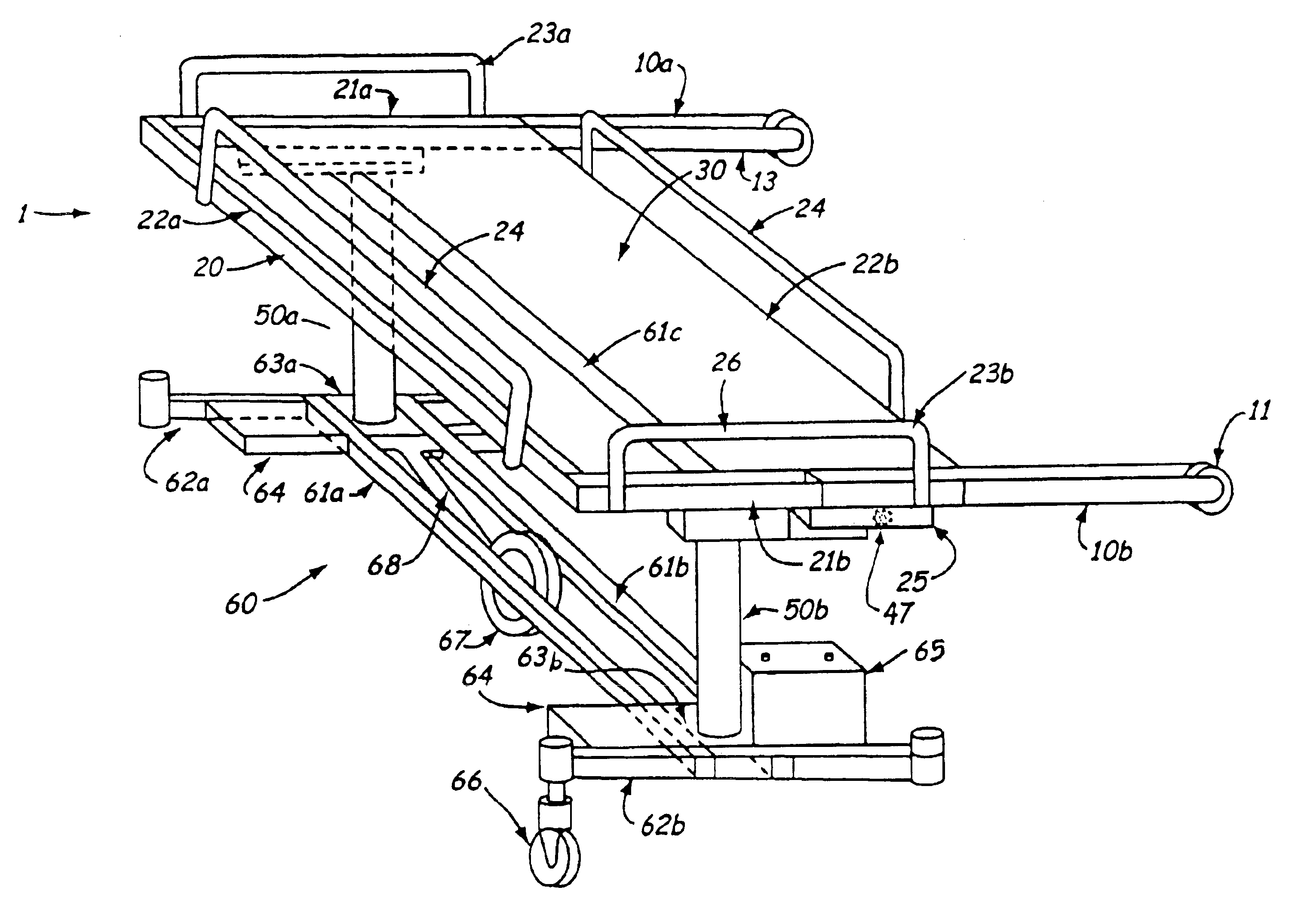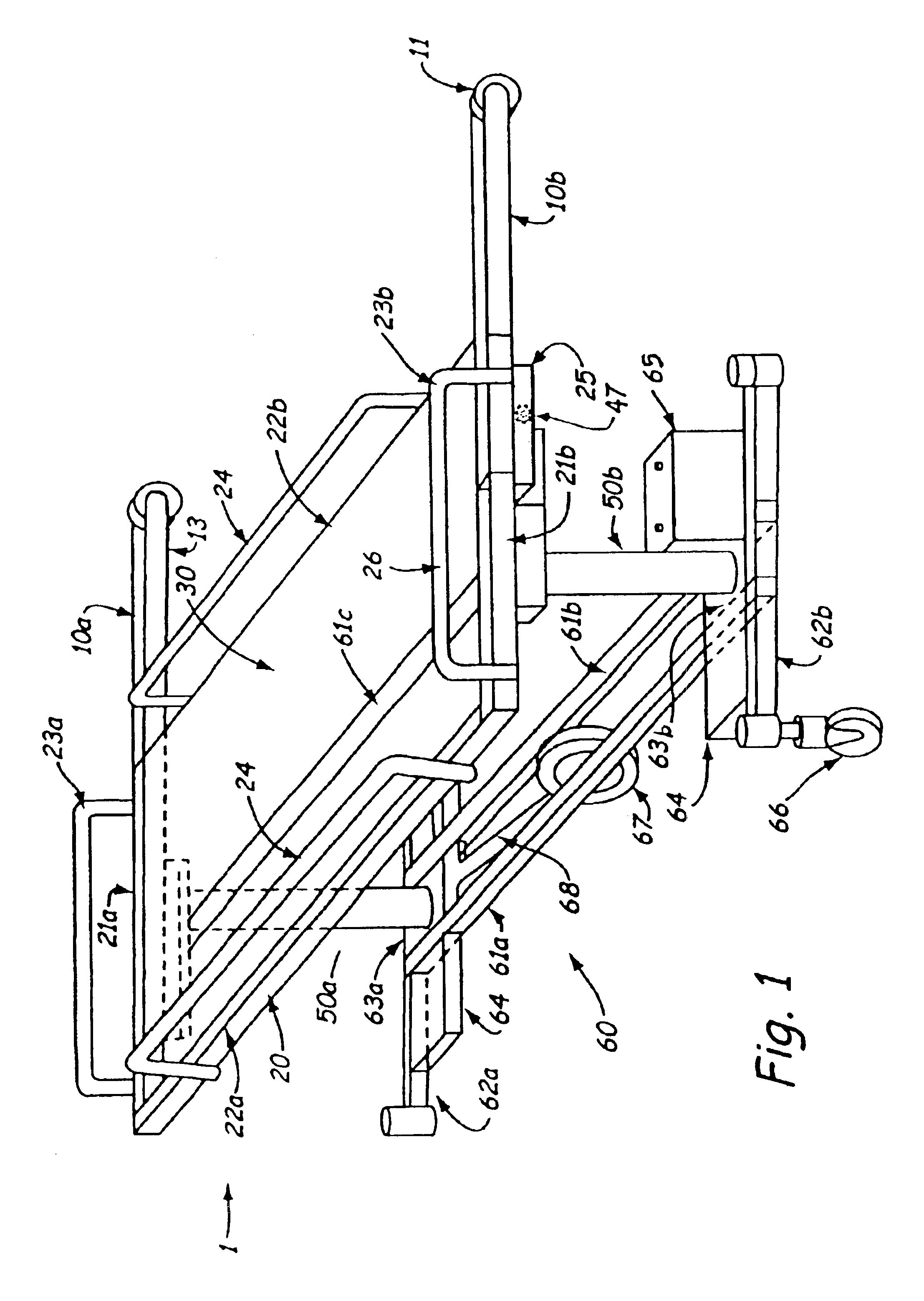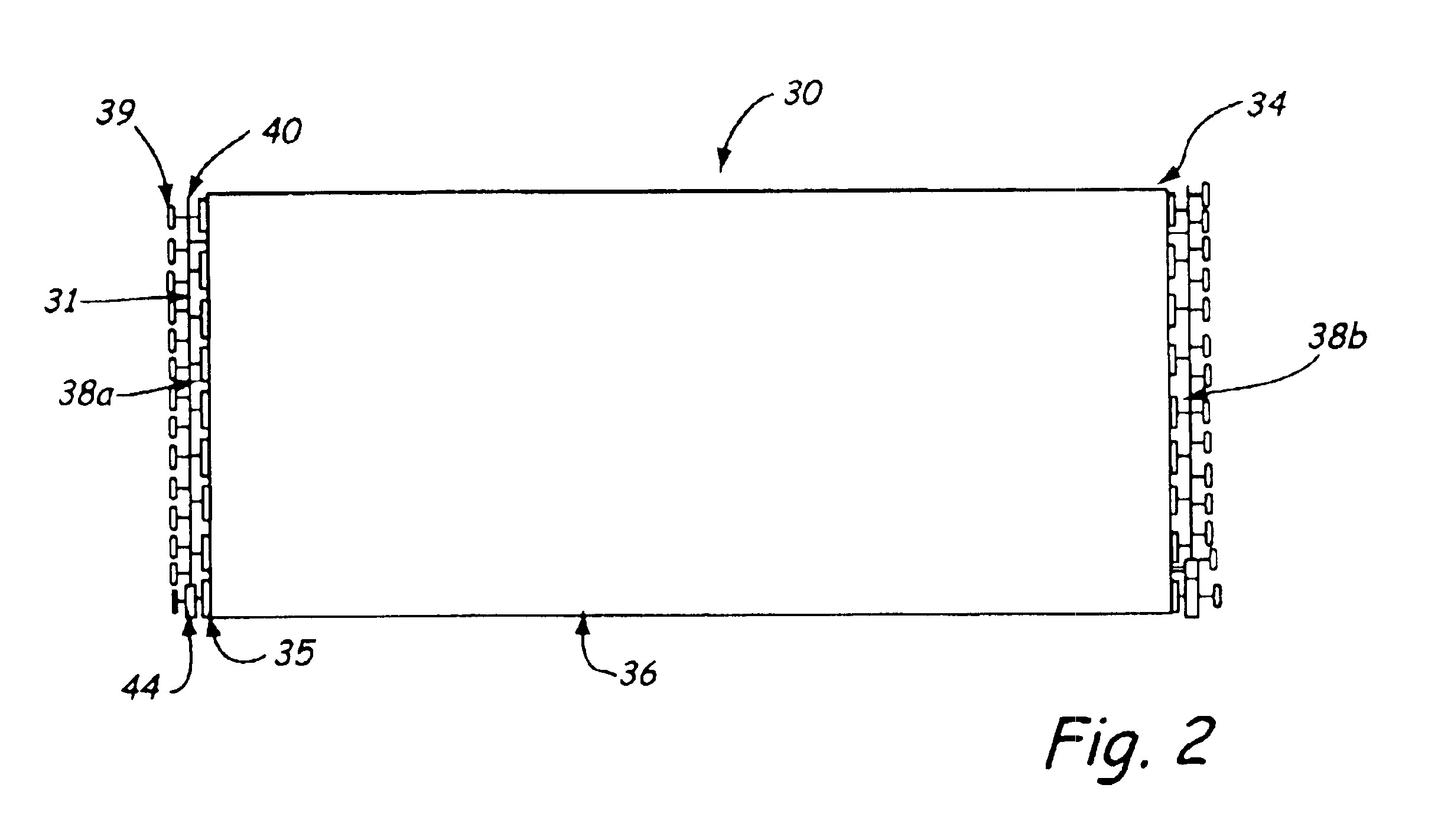Patient transfer and transport bed
a technology for transporting beds and patients, applied in the direction of nursing beds, transportation and packaging, wheelchair/patient conveyancing, etc., can solve the problems of patient injury, process will continue to become more difficult and injury-prone, and hospital personnel, including nurses, will be injured
- Summary
- Abstract
- Description
- Claims
- Application Information
AI Technical Summary
Problems solved by technology
Method used
Image
Examples
Embodiment Construction
FIG. 1 is a perspective view of a patient transfer and transport device 1, according to one embodiment of the present invention. As shown in FIG. 1, the patient transfer and transport device 1 has two transfer arms 10a, 10b, a platform receiving frame 20, a transfer platform 30, two support posts 50a, 50b, and a base 60. The base 60 and the support posts 50a, 50b support the frame 20 at a desirable height. The transfer arms 10a, 10b are attached to the frame 20 and support the transfer platform 30 during lateral motion away from the frame 20.
As further shown in FIG. 1, the platform receiving frame 20 has a first end 21a, a second end 21b, an enclosed side 22a, and an open side 22b. In one embodiment, the ends 21a, 21b are slotted-sleeve channels, as further explained below. A rail handle 23a is mounted on the first end 21a. A throttle rail handle 23b is mounted on the second end 21b. One of each of the transfer arms 10a, 10b is slidably mounted within each end 21a, 21b. Each transfe...
PUM
 Login to View More
Login to View More Abstract
Description
Claims
Application Information
 Login to View More
Login to View More - R&D
- Intellectual Property
- Life Sciences
- Materials
- Tech Scout
- Unparalleled Data Quality
- Higher Quality Content
- 60% Fewer Hallucinations
Browse by: Latest US Patents, China's latest patents, Technical Efficacy Thesaurus, Application Domain, Technology Topic, Popular Technical Reports.
© 2025 PatSnap. All rights reserved.Legal|Privacy policy|Modern Slavery Act Transparency Statement|Sitemap|About US| Contact US: help@patsnap.com



